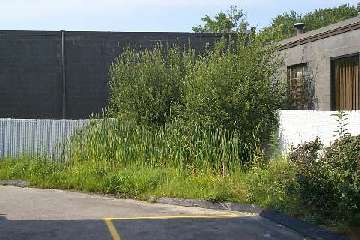
In the March 6, 2001, New York Times:
"New Pollution Tool: Toxic Avengers with Leaves,"
An article by Andrew C. Revkin
Reviewed by Linda Avery, March 8, 2001
The article discussed the fact that in the United States it is expected that the cost to decontaminate toxic sites will eventually surpass 700 billion dollars. They are now experimenting with plants to help in this cleanup process rather than via the traditional way of digging out and moving to landfills.
The last decade has been dedicated to the testing of this process and the searching out of plants that represent the "botanical equivalent of detox centers." Some examples include sunflowers that capture uranium, clovers that "eat" oil, trees that destroy dry cleaning solvents and many more.
At The National Risk Management Research Laboratory of the Federal Environmental Protection Agency in Cincinnati, there is a team that has been established to see how plants can fight pollution and this process has been used at several federal Superfund sites (sites of the worst toxic spills).
 |
| A local gas-station attempts phytoremediation of storm runoff. |
While it does appear to be an exciting process, the author does go onto review some of the concerns with this process. Some of these are that plants must be chosen for not only what they can do to help the site, but the plant must be able to survive in the climate it must work in. The plant must also be looked at very closely to determine what the plant then does with these materials, does the plant just send the chemicals back into the air through itís pores? And actually make matters worse? Another major concern is the food chain and how what these plants breakdown re-enters the food chain.
Limitations to this process include the time it takes for the plants and trees to grow and infiltrate the area to eliminate or reduce the pollution.
While the article does go onto say that at this point, there will always be a need for the digging out and filling of major sites, they are excited about the fact that this process provides what may be an alternative that will at least reduce that 700 billion dollar tab to a more manageable figure and do it in a environmentally friendly way.
The chemistry behind this process is that it is the plants roots are an efficient mechanism for pulling nutrients and water out of the ground. Many trees and plants have extensive root systems that will hunt the soil for food. It is hoped that once found many of these plants would not only extract the pollutants from the soil, but also will in fact breakdown and destroy the chemical thereby eliminating the concerns to the environment and food chain.
The article goes onto review several sites where this process has been used to successfully reduce or eliminate levels of lead, zinc and arsenic from soil and it also identifies some of the forward goals being cautious that " If you have a couple of big flops people will lose confidence."
In light of the reading we have been doing, I found this article extremely interesting, but still have many concerns of what these plants really do with this material. All or most of our discussion so far have been around the fact that these materials, if not broken down by the plants would be re-introduced into the environment through respiration, the food chain or waste and that is where I think additional research needs to be done.
The link to this article can be found at http://www.nytimes.com/2001/03/06/science/06PLAN.html. (Note: To view New York Times articles on-line you will have to register. The registration requires your email address, but is otherwise anonymous. There is no charge to register.)
Submitted to and posted by Anthony Benoit
April 26, 2001
Top | Back | Explorations | ENV 1100